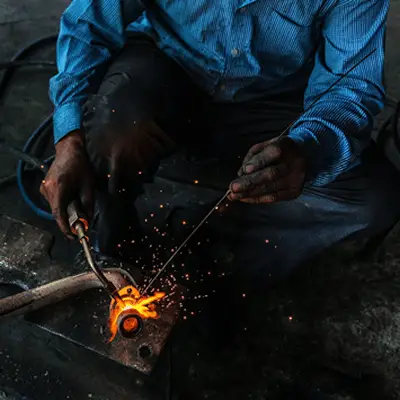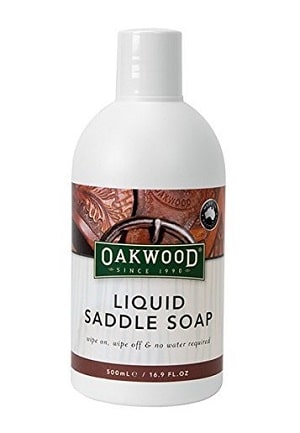After finding the perfect blanket for welding, the main concern is whether can you wash it.
They are made of different materials and have a wide range of functions. You don’t want to make them useless by not cleaning them properly.
We did all of the research for you so let’s answer the question: Can you clean a welding blanket?
What is a Welding Blanket?
Whenever you’re welding or doing oxy-cutting anywhere, there’s every tendency that sparks, spatters, or flying metals fall on the surrounding objects, and even on you as the welder.
A welding blanket is a protective cover to protect the surrounding objects and you as the welder from these metals.
There may be flammable materials close to where you’re welding, a welding blanket prevents the danger of fire breakage and retards smoke.
An ideal welding blanket is made of fiberglass, and carbon fiber, and some others are made of split leather.
Having a welding blanket is very useful for your workshop safety. Other protective wears can only safeguard your body.

To have a full cover of your surrounding for safety, you’ll need a welding blanket.
One another reason why they are made with flame retardant fabrics is to resist high temperatures and prevent any fire, from causing a reaction.
Your mask, respirator, jacket, gloves, apron, and boots are for personal protection.
A welding blanket will protect your objects, equipment, other surrounding objects, and anyone in your work area.
It is designed to keep off molten metals and any spark from your things and even from touching you. It is highly recommended for use in every welding workshop.
The only good you can do to yourself in the workshop is to keep your things safe from the fire-causing agents. Only a welding blanket can do this.
Check out our guide about the best welding blankets here.
Welding Blanket is heat and fire resistant and is part of the safety equipment meant to protect the equipment, surrounding areas – a wooden floor, the bodywork of a car, furniture, even when cutting, grinding, or any other activity that can create heat, and most importantly to protect you.
These blankets can be used on both horizontal and vertical surfaces, but bear in mind that when they are used on a flat surface, should be able to sustain more heat.
Types of Welding Blanket Materials
- Fiberglass blankets – Fiberglass blankets are the most popular models. They have a high melting temperature and are durable and strong. Fiberglass blankets over time lose small sheds that are irritating the skin for which these types of blankets have a different type of coating.
- Leather blankets – Many welding clothes, such as welding sleeves, welding aprons, etc., are made of leather due to their high fire resistance. Leather blankets don’t need a coating, and are good for the skin, but they are a lot more expensive and heavier.
- Felt blankets – Felt blankets are made by pressing fibers together. It is much more fire resistant than fiberglass and leather blankets, but it is not very durable and can’t be used for a longer period.
Types of Coating
Safety blankets usually have a coating of protective and heat-resistant material which enhance their features.
- Vermiculite
- Silicone
- Acrylic coating
- Heat treated coating
- Aluminum foil
How Can You Clean a Welding Blanket?
You need to take good care of your welding equipment so you can use them effectively for a longer period.
The heat-resistant blankets should be washed carefully, using certain detergents that won’t ruin the protective layer.
Here are a few ways that’ll help you clean it.
Washing the Blanket in a Washing Machine
Do not mix your blanket with other heat-resistant clothing or non-heat-resistant clothing.
Make sure to do separate loads so you can keep the protection and prevent chemicals from non-heat-resistant materials to contaminate your blanket.
- The preferred water temperature is 104ºF (40ºC) and less – Despite popular belief for destroying stains with hot water, it is best if you wash the heat-resistant material in warm water that is not more than 104ºF. Avoid using the hottest temperature on the washing machine. To be sure, check the manufacturer label for the preferred temperature.
- Wash it with bleach-free detergent and don’t use soap – You can use any type of detergent that doesn’t have bleaching features. Bleach can ruin the integrity of the blanket. When using your home laundry detergent, check its label, so you can be sure that it doesn’t contain bleach or chlorine. When choosing a detergent, liquid one will be the most ideal. Avoid using fabric softeners and soaps, since they can destroy the structure of the protective layer by leaving a flammable coating behind.
- Don’t let the blanket soak in the washing machine for a longer period than the preferred cycle. Soaking in a detergent and water can damage the protective layer. If you are washing the blanket on hand, just dampen it and do not soak it.
Here’s a good example of bleach-free detergent:
- USDA Certified Bio-based Product
- Neutral ph-balanced formula
- Fragrance-free formula
Removing Stains from a Welding Blanket
Try to clean it right after staining it. Blankets with different types of stains on them, such as paints, oils, solvents, or some other flammable substances, can reduce their heat protection.
- Fill the sink with hot water. Check the label from the manufacturer to determine the preferable temperature of the water.
- Wet the blanket
- Rub dish detergent or liquid laundry detergent on the dirt/grease stains. Make sure to avoid detergent with bleach components.
- Let the detergent on the blanket for 3 to 5 minutes.
- After 5 minutes, rinse the detergent and check if the stains are cleaned. If the stains still appear to be on the blanket and cannot be cleaned with liquid detergent at home, take the blanket to a professional cleaning service.
- Sometimes, even if the stains are removed, there can be certain discoloration on the fabric.
- Read the manufacturer label to check if the blanket can be dry-cleaned. A dry cleaning service can help you in lifting deeper stains.
Industrial laundry
- First and foremost, do not wash a welding blanket with other clothing. You are doing this to prevent damage to the luminescent effect.
- Wash with soft water all the time. Hard water will not give the desired result because it contains insoluble deposits that will form on the material of a blanket. When these deposits are much, the flame retardant feature characteristics will fail. It may even serve as fuel for an ignition source.
- Wash with non-ionic formulas. Natural soaps are anionic.
- Detergents and water at temperatures, of not more than 140°F, are okay for washing.
- Avoid using bleach on the blanket surface. Keeping the luminescent effect is essential.
- If the blanket has been stained with oils and stubborn dirt, run a flush at a temperature of 105°F. Abrasion will reduce to a great extent.
- Do not apply fabric softener or starch; they’ll kill the blanket’s performance.
- Do not wash for too long to avoid wrinkles.
- Do not over-dry as well.
- You can apply tunnel finishing to improve the appearance of your blanket at a temperature not exceeding 280°F.
- You are free to press the blanket if possible, under warm temperatures.
- For other precautionary measures, always get instructions from the manufacturer.
Washing Leather Welding Blanket
Use Saddle Soap for cleaning leather welding blankets
- Buy saddle soap from the local shoe store or online.
- With a clean damp cloth, clean the surface of the leather. Add enough water to the cloth so it will be damp and not soaked. Rub the cloth across the surface of the leather blanket in order to remove dust or some other debris.
- Once clean, take a second clean cloth and apply a small amount of the soap on the cloth. Then rub the cloth gently across the surface of the leather blanket until it disappears from the leather. All the motions should be clockwise.
- After covering the whole leather surface, take the third cloth to remove any saddle soap excess.
- Sometimes it may not clean the blanket completely, but it will remove a large amount of the stains.
Here’s a good example of saddle soap:
- It leaves no residue
- Neutral ph-balanced formula
- Fragrance-free formula

How to Dry a Welding Blanket?
- The most preferable option is to let the blanket dry naturally by hanging it up, without using a dryer.
- Hang the blanket lengthwise, folded in half over a line so its weight can be distributed evenly. When is almost dry, reverse its position.
- While drying shake the blanket occasionally to restore its fussiness.
- If you want to use a dryer, set the dryer temperature to medium or cold. Do not use the hottest temperature to avoid damaging them.
- Make sure to not over-dry them.
Is it dangerous to wash a welding blanket?
One thing you should always be careful of is the long-term effect of washing your blanket.
These blankets are not easily elongated until there’s a strain of material or accumulation of chemical deposits.
The primary cause of a blanket getting damaged is when you perform an inaccurate wash. Some chemicals used in the washing process affect the materials.
When there are too many deposits on the surface of the blanket, it can be fuel for fire-causing reactions.
The only danger involved in washing a welding blanket inaccurately is losing the heavy-duty properties and causing fire breakage. Instead, you can still replace your blanket.
Final Thoughts
In order to use it for a longer period, you need to take extra precautions while cleaning it.
Because they are made out of numerous materials and coatings, the question: can you clean a welding blanket is becoming more and more popular?
Of course, you can wash it and the main tips on how to wash it are:
- Use detergent and not soap or bleaching detergents
- While washing do not use temperatures above 104ºF (40ºC)
- Don’t let it to over dry, in order to keep its heat-resistant integrity

